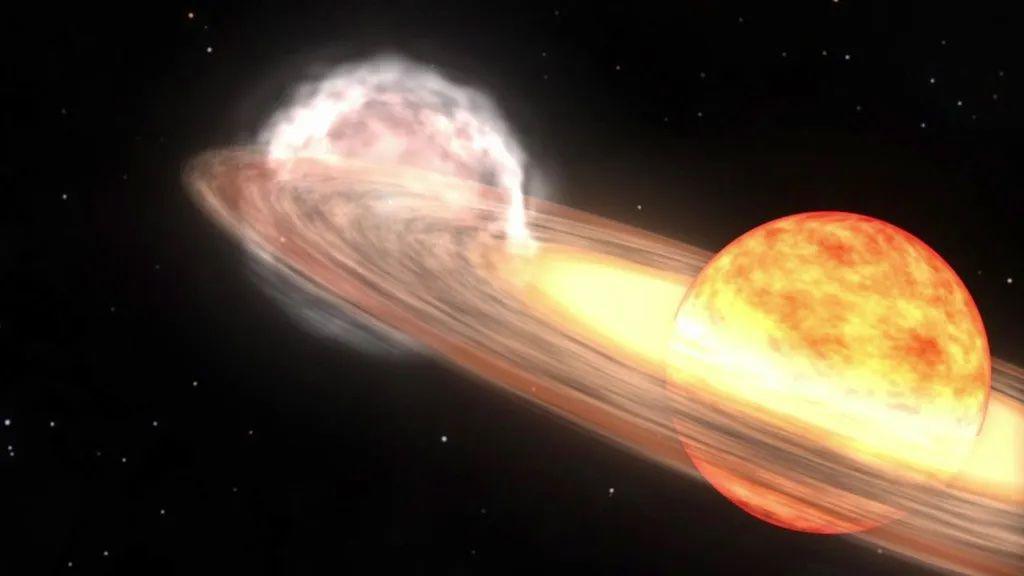'Once-in-a-lifetime' cosmic event to take place this summer

An illustration of a nova event similar to the one we'll see this summer, including a white dwarf star and a red giant
- Published
A star some 3,000 light-years away will explode in a "once-in-a-lifetime" cosmic event this summer, according to astronomers at Nasa.
T Corona Borealis, known as the Blaze Star, is expected to erupt this summer – creating a light so bright we'll be able to see it from Earth.
This type of explosion is called a nova event.
“It’s incredibly exciting to have this front-row seat," said Nasa's Dr Rebekah Housell.
- Published6 June
- Published8 June 2023
- Published4 March
What will cause the Corona Borealis nova explosion?
The explosion will happen in the Corona Borealis binary system.
That's when two stars orbit each other – in this case, the two stars are a white dwarf and a red giant.
It's the white dwarf star, calledВ T Corona Borealis,В that astronomers are expecting to erupt.
Yes, that's the T Corona Borealis star in the Corona Borealis system. Confusing!
Can you spot the Corona Borealis?
The star is about the size of the Earth but has a much a larger mass which is similar to our Sun.
This means it has a very strong gravitational pull.
As a result, T Corona Borealis pulls hydrogen from the neighbouring red giant star onto its own surface.
As more and more hydrogen gathers on its surface, heat and pressure will build up – eventually triggering an explosion.
“It’s a once-in-a-lifetime event that will create a lot of new astronomers out there," said Dr Hounsell, an assistant research scientist specialising in nova events at NASA’s Goddard Space Flight Center.
She said it would give "young people a cosmic event they can observe for themselves, ask their own questions, and collect their own data".
More space stories
- Published11 May
- Published15 December 2023
- Published9 December 2023
